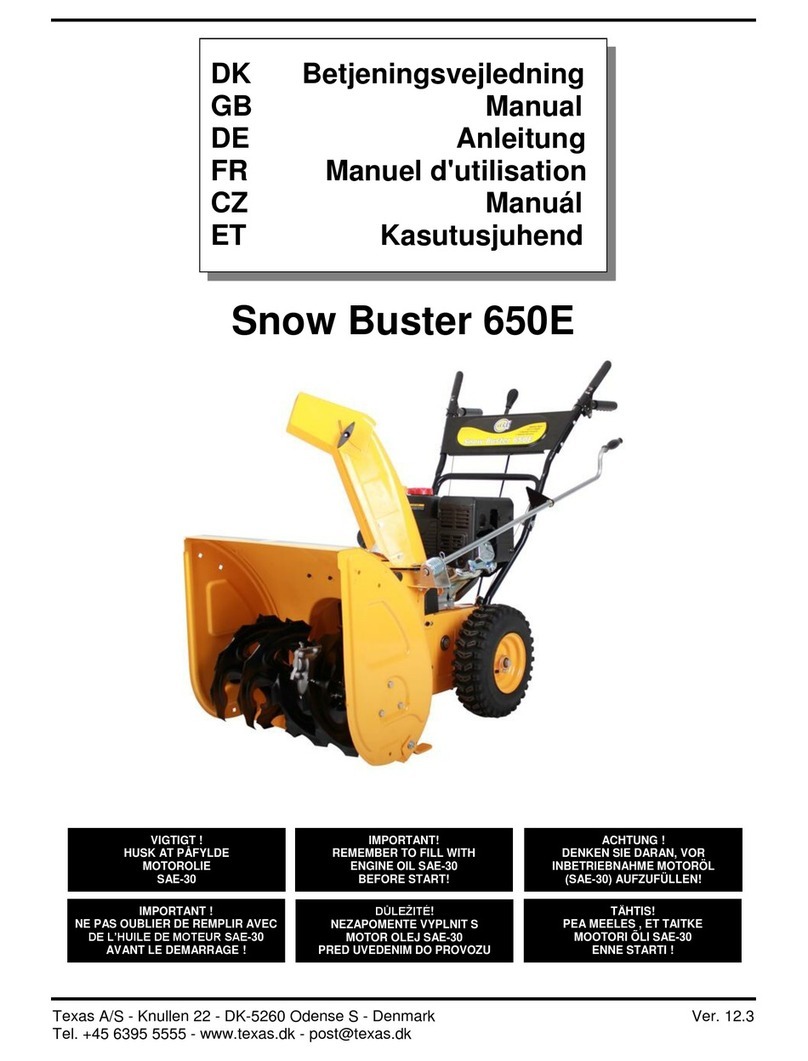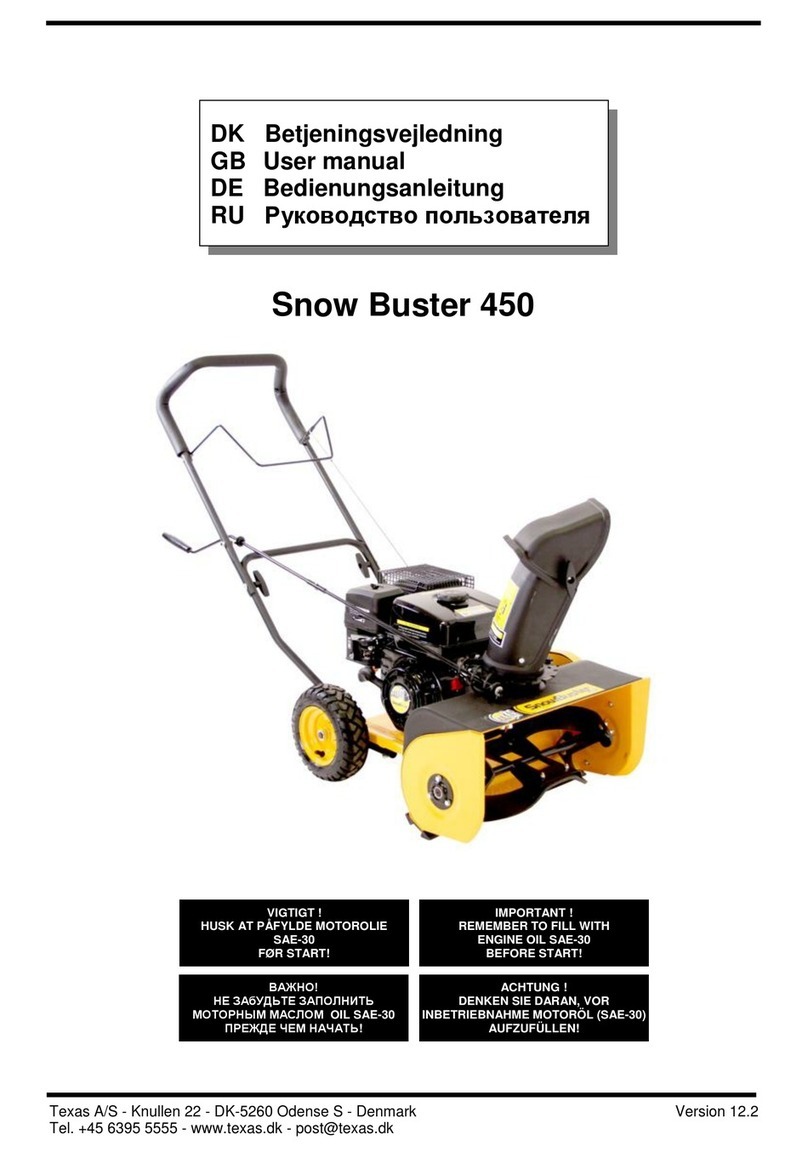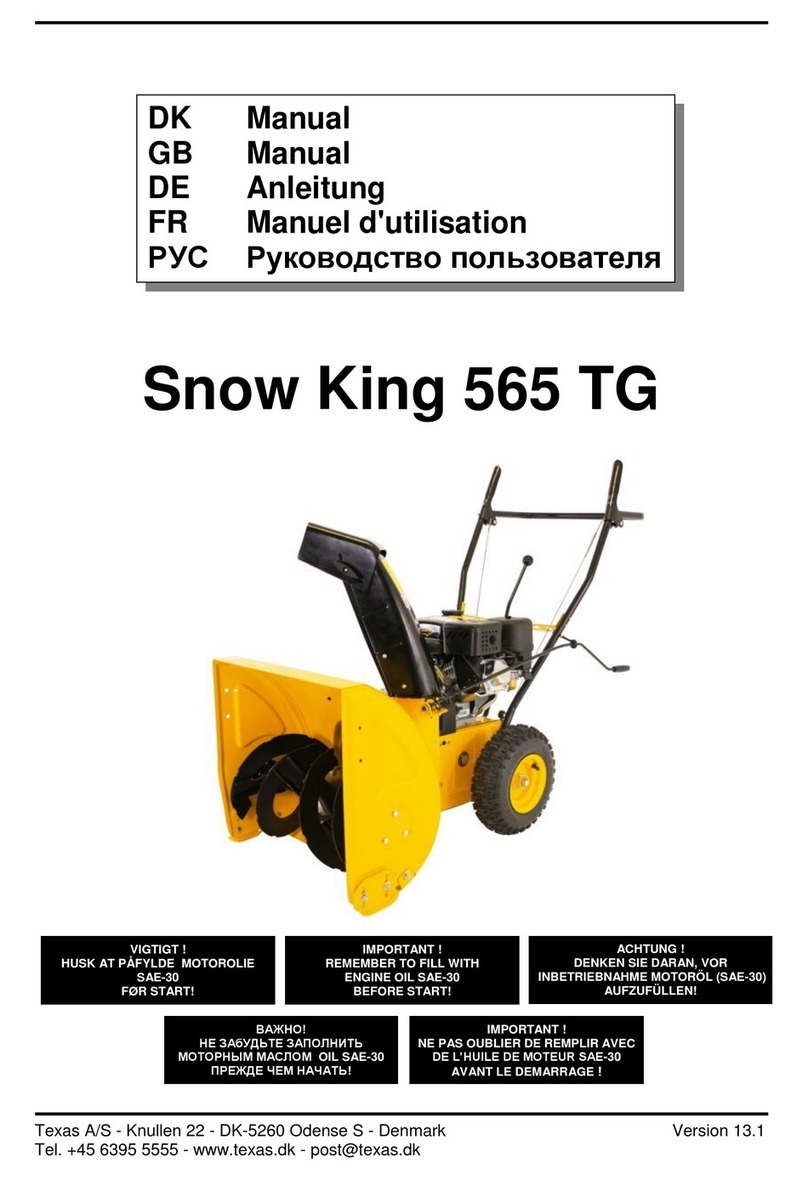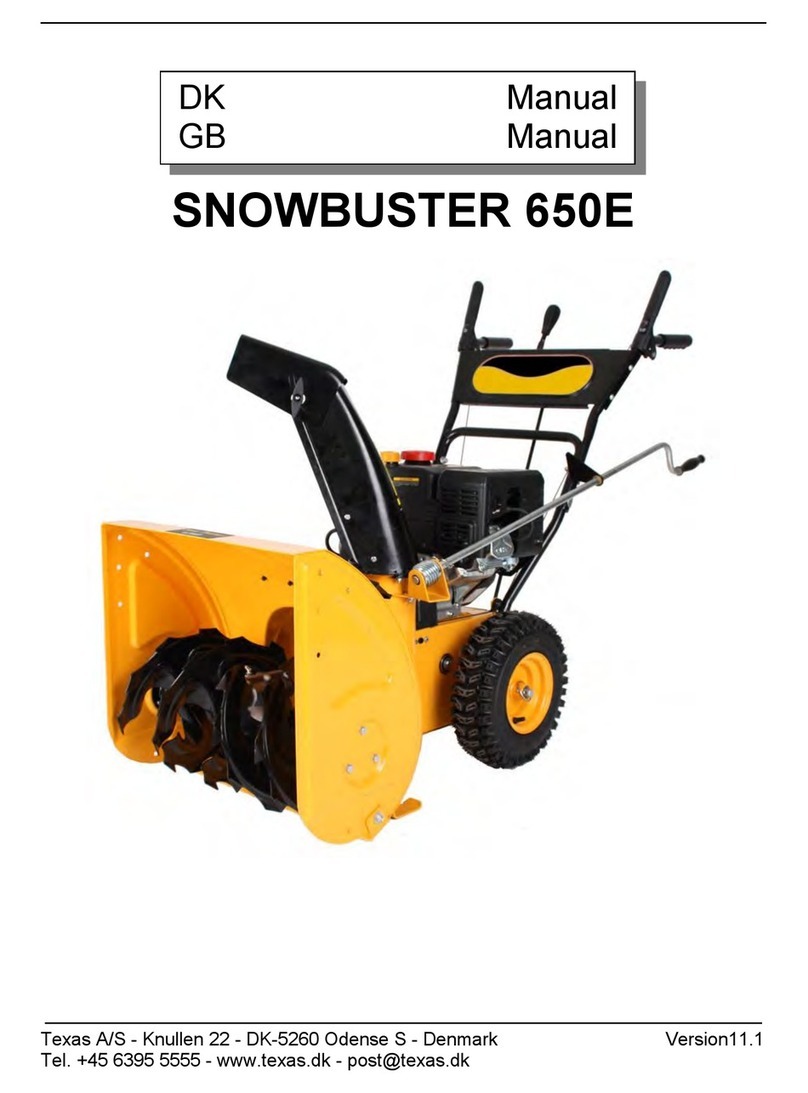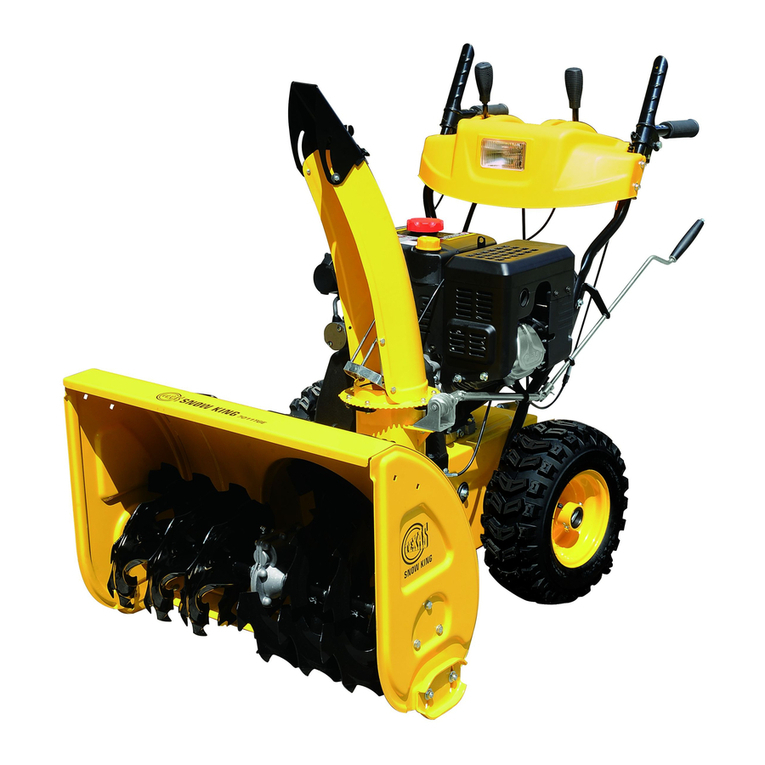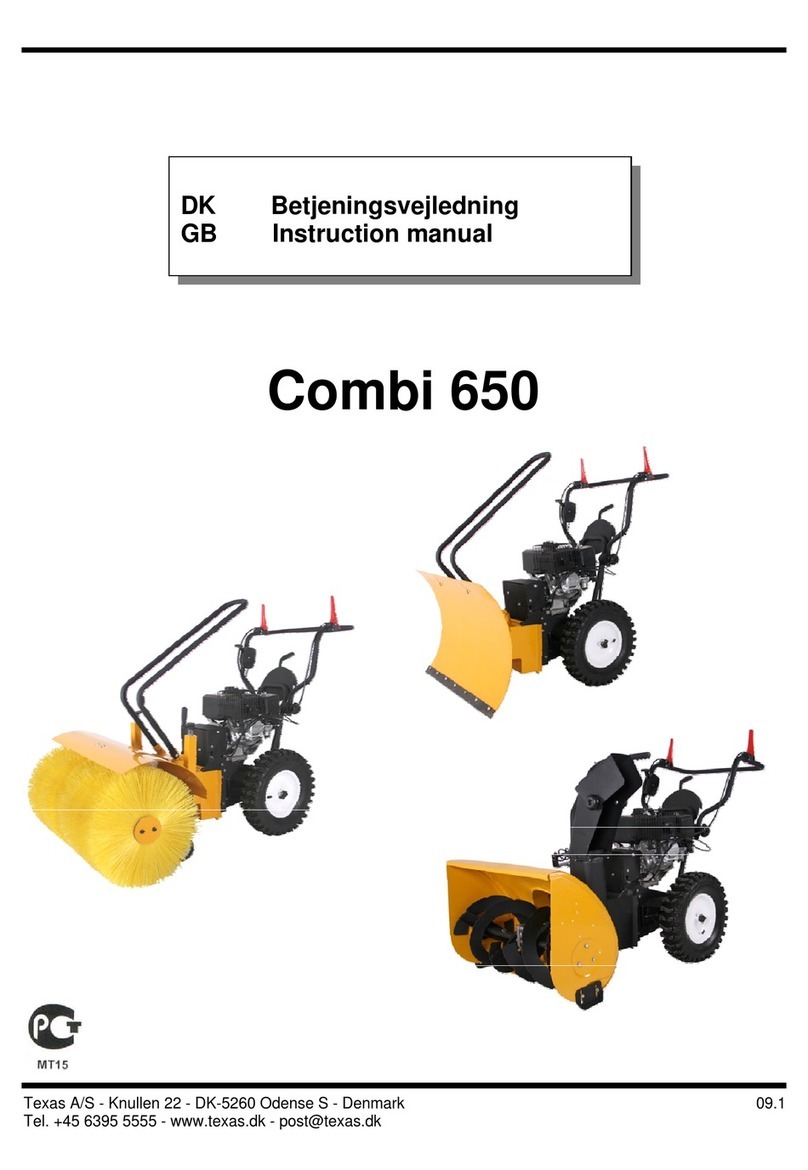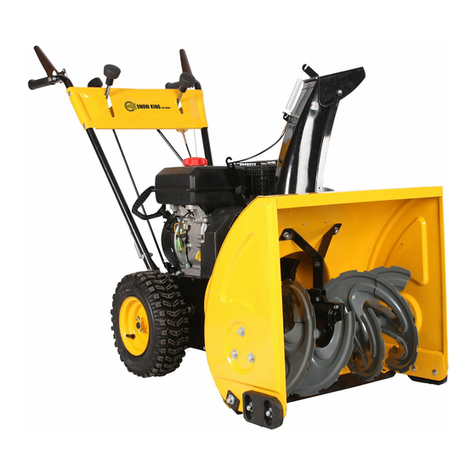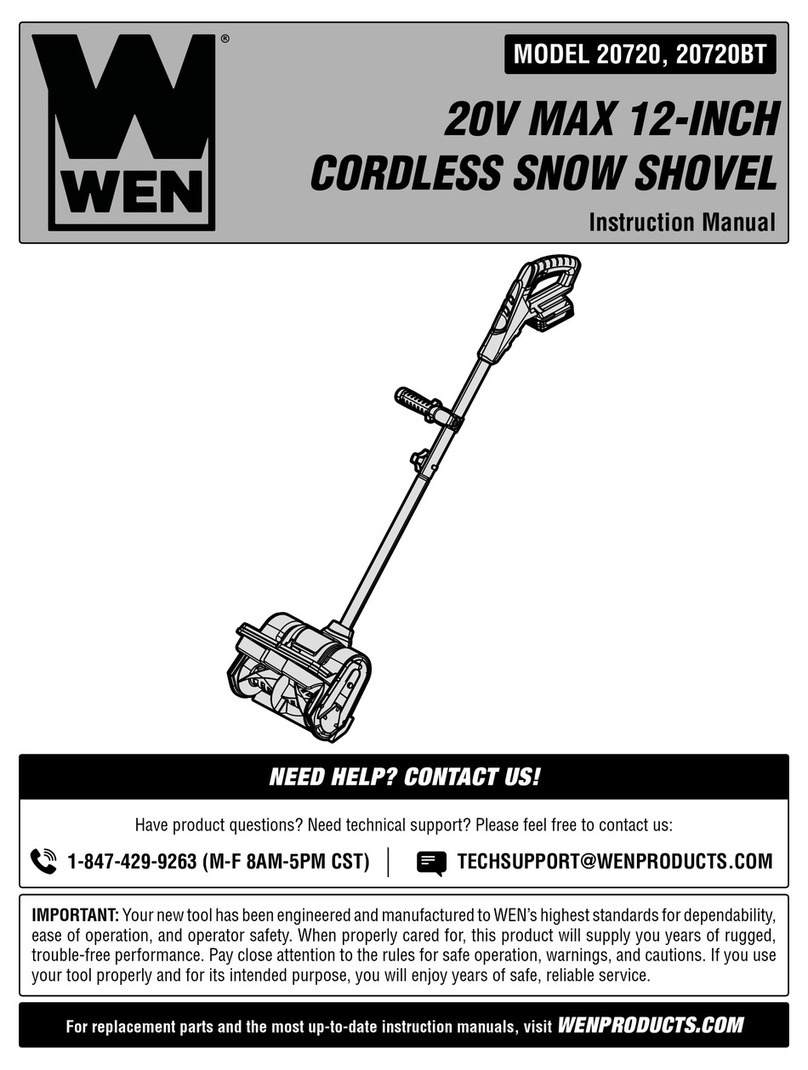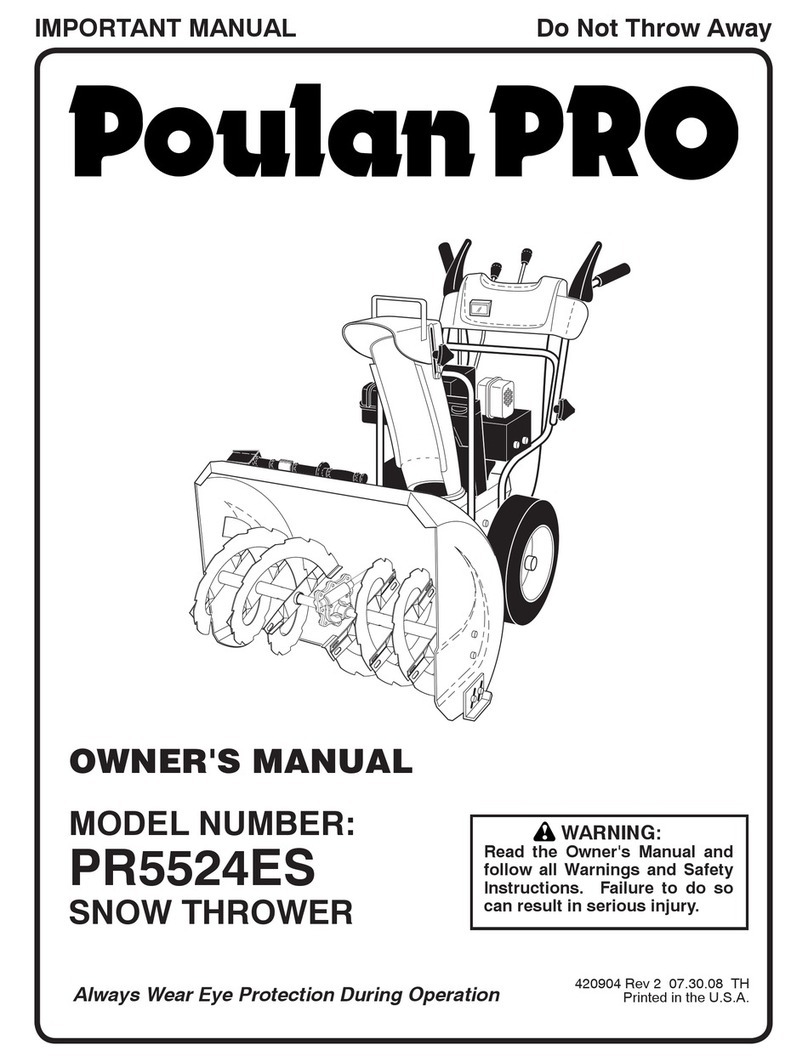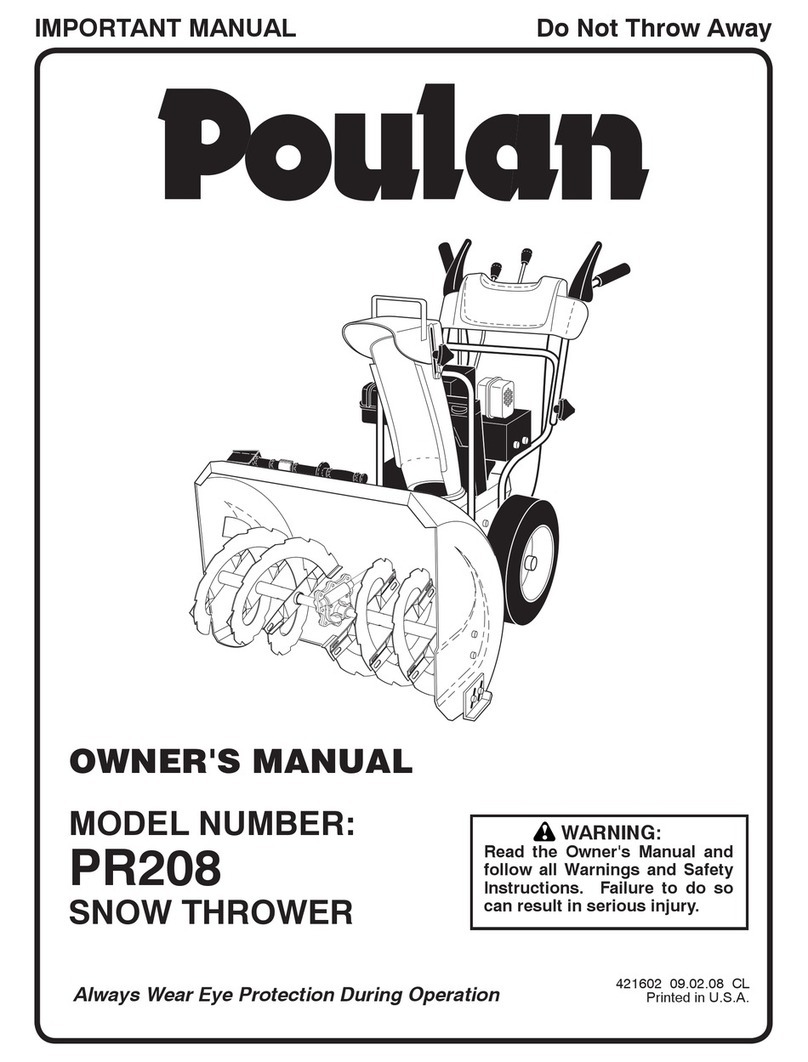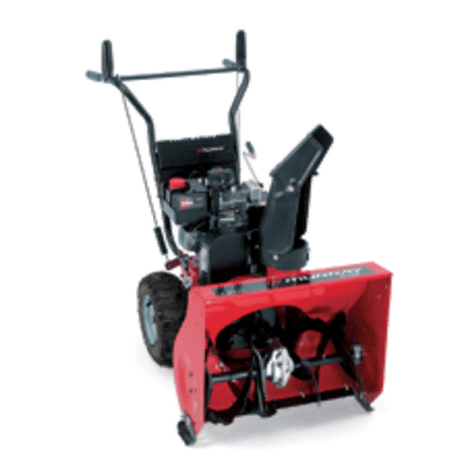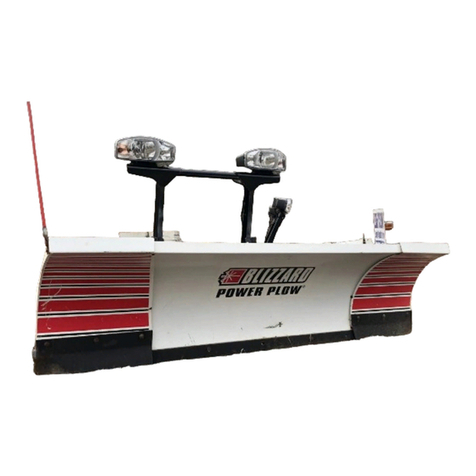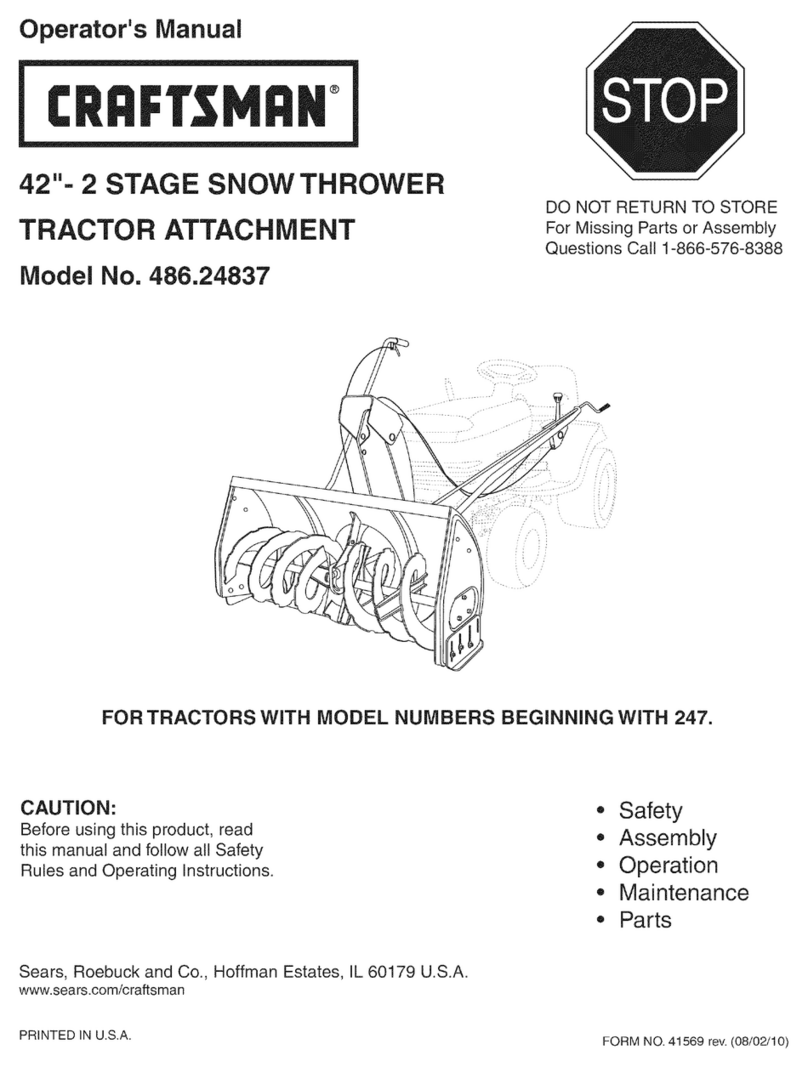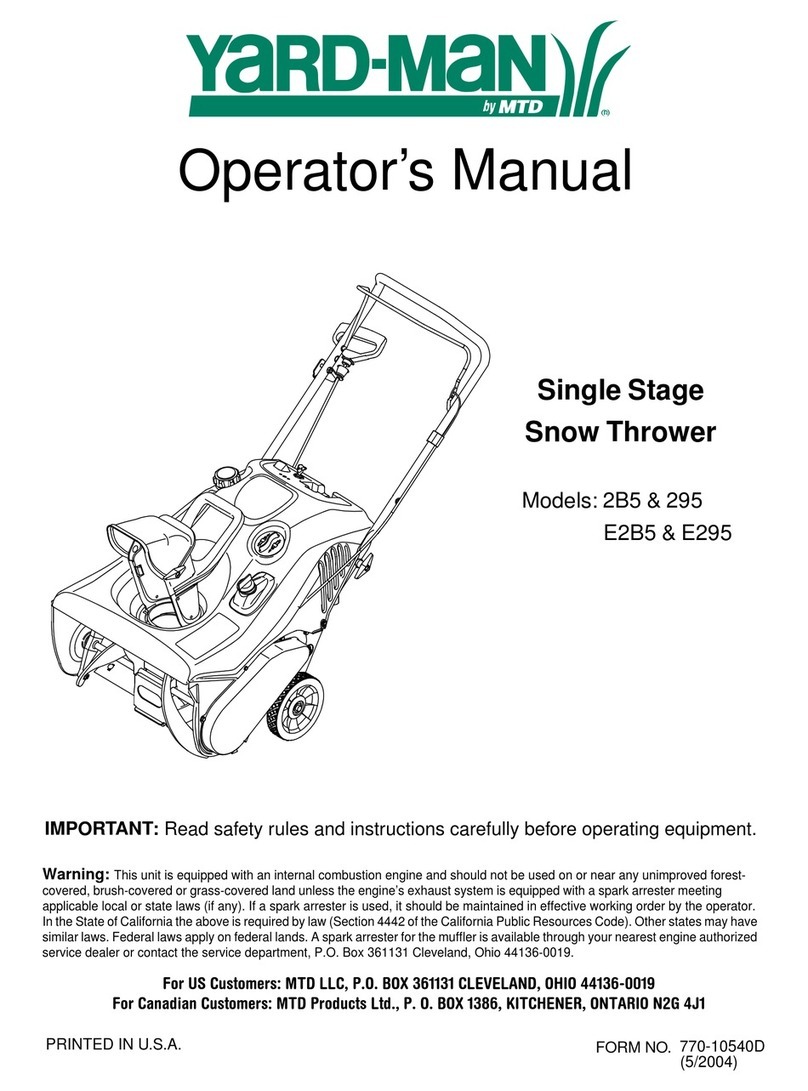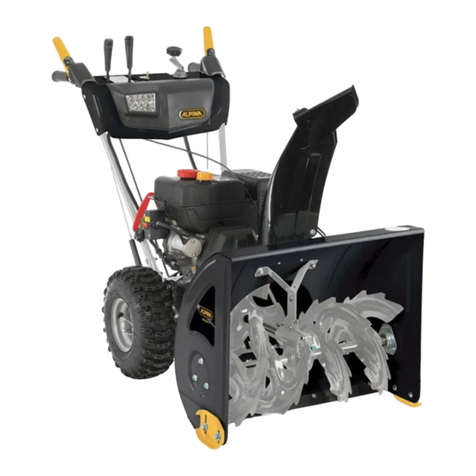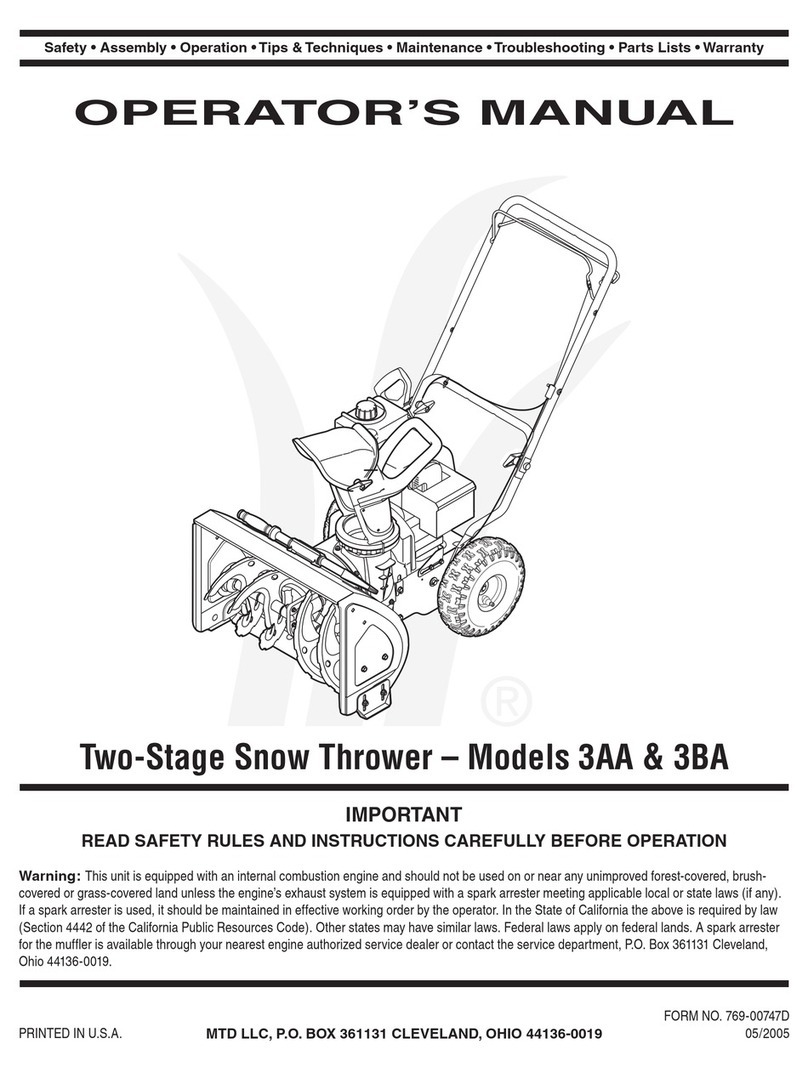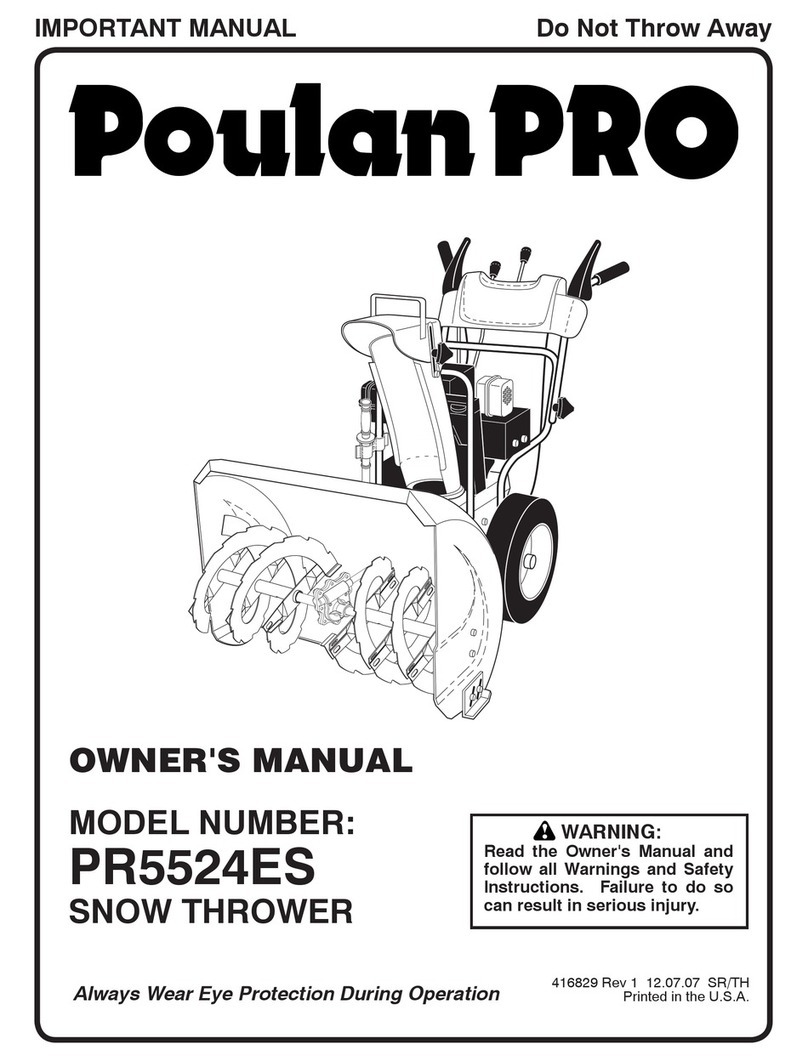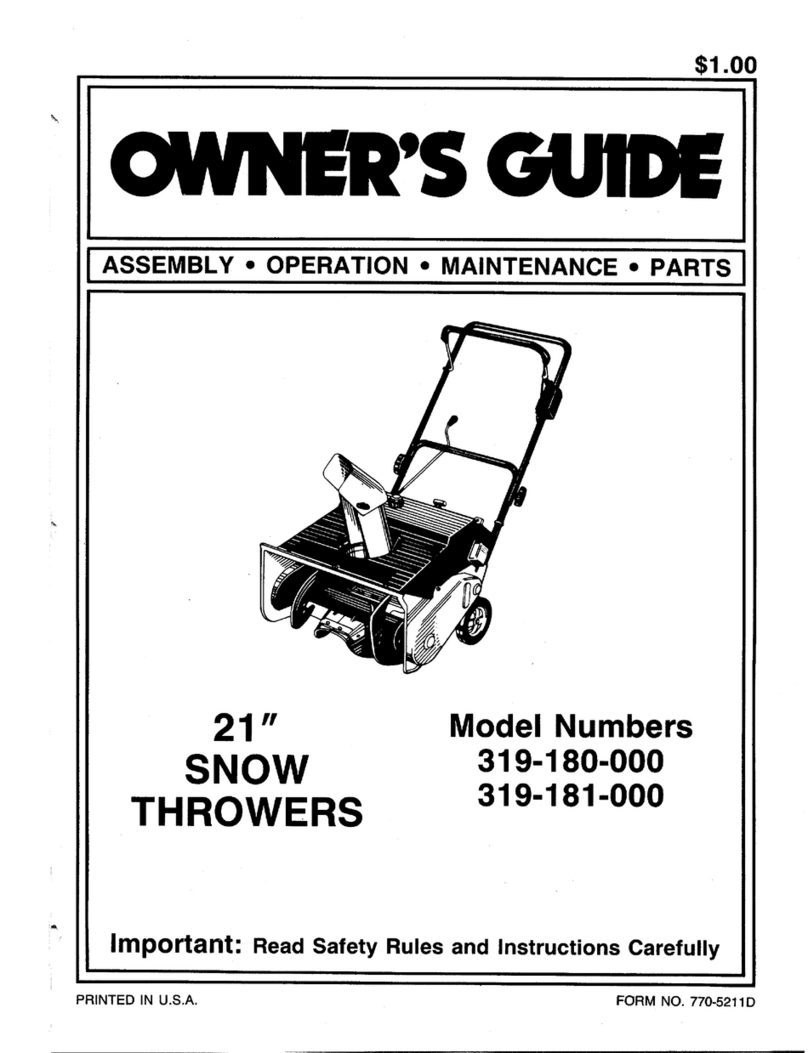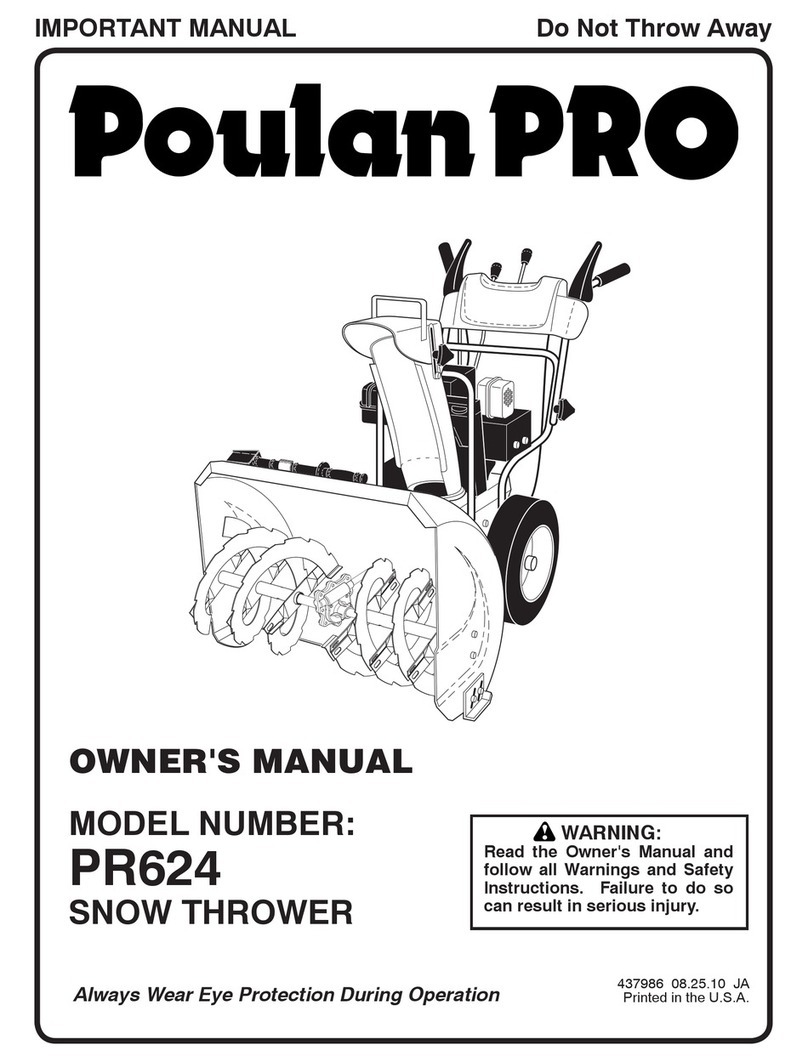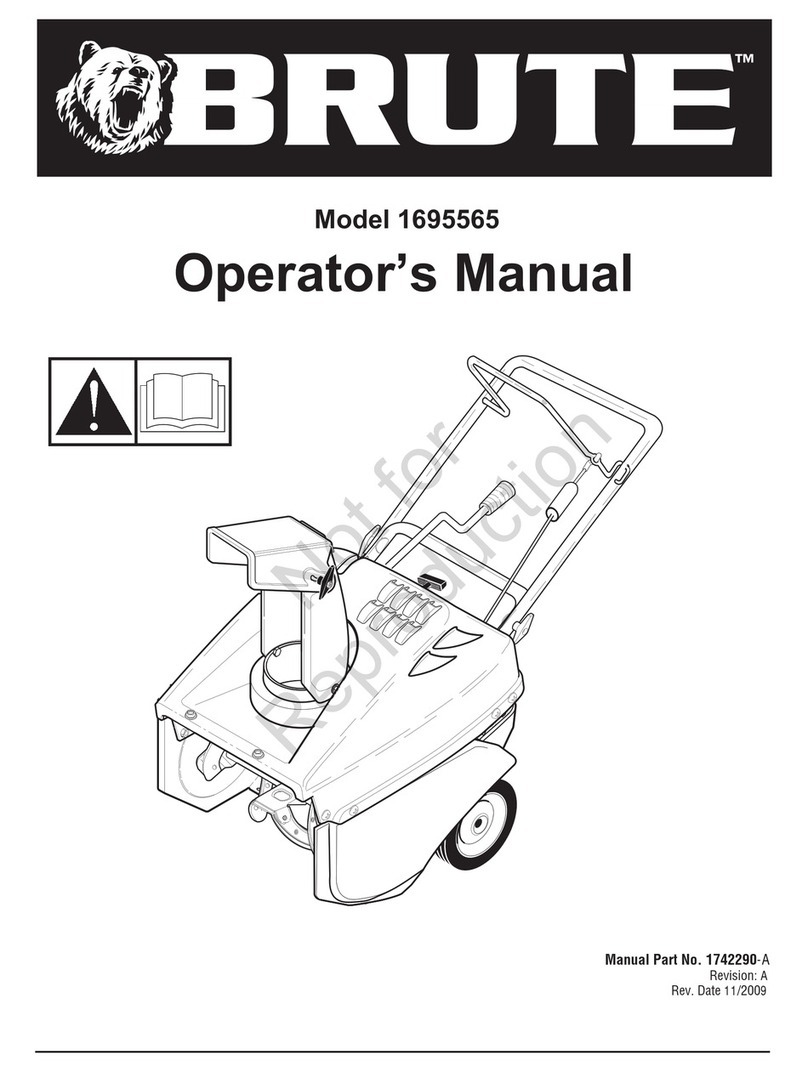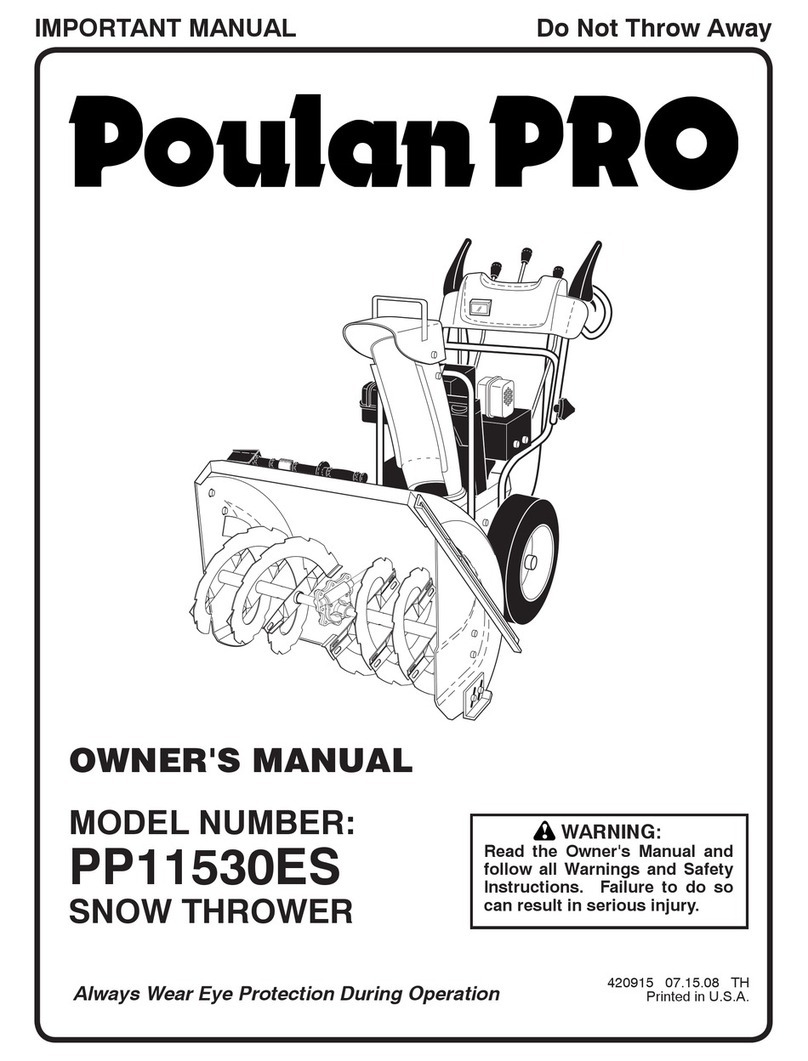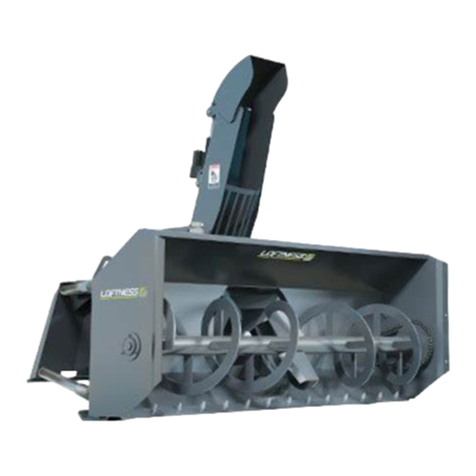5
Setup Read this manual carefully. Make sure that you are familiar with the different control
settings and handles of the equipment.
Know how to stop the unit and ensure that you are familiar with emergency stop.
Never allow children to operate equipment.
The machine must only be operated by persons who are familiar with the safety of the
snowblower.
If you feel unwell, tired or have consumed alcohol or drugs, do not operate the machine.
The operator of the machine is responsible for people’s safety. Never use the machine near
children or animals.
Thoroughly inspect the area, where the equipment is to be used. If necessary remove
foreign objects such as doormats, sleds etc.
Disengage clutch and shift into neutral before starting engine.
Do not fill the gasoline tank indoors, while the engine is running, or while the engine is still
hot. Spilled gasoline is extremely flammable.
Wipe off any spilled gasoline before starting the engine. It may cause a fire or explosion!
Use an earth grounded socket for electric starter.
Adjust auger height so it is level with the surface.
Never attempt to make any adjustments, while the engine is running.
Let engine and machine adjust to outdoor temperature before operation.
Always wear safety glasses and earmuffs during operation or while performing an
adjustment or repair, this is to protect eyes from foreign objects that may be thrown from
the machine in any direction. Boots with non-slip soles with steel jacket is required. Avoid
loose-fitting clothes.
Only use original spare parts and accessories.
Operation
Do not put hands or feet near rotating parts. Keep discharge opening clear at all times.
Exercise extreme caution when operating on crossing gravel drives, walks, or roads.
Beware of traffic.
Do not carry passengers or transporting heavy load.
After striking a foreign object, stop the engine immediately, remove the spark plug cap and
inspect the machine thoroughly for damage. Repair the damage before continuing
If the snow blower should start to vibrate abnormally, stop the engine and check
immediately for the cause. Vibration is generally a warning of damage.
Always disengage the auger, shift into neutral, turn off the engine, and remove the ignition
key, when the unit is left unattended.
Always turn off the engine and ensure that all moving parts have come to a complete stop
before making any repairs, adjustments, or inspections.
Don’t start the engine indoors. However, it is safe to start the engine indoors, if it is to
transport the machine in and out of a building.
Do not clear snow across the face of slopes. Exercise extreme caution when changing
direction on slopes. Do not attempt to clear steep slopes.
Never operate snow blower near windows, enclosures, cars, etc. without proper adjustment
of chute discharge angle.
Do not overload machine capacity by attempting to clear snow at too fast a rate.
Never operate the machine at a fast pace on slippery surfaces. Be extra cautious when
reversing the snow thrower.
Never direct discharge at bystanders or allow anyone in front of unit.
Always disengage the auger if not in use.
Only use orginal spare parts or accessories. If not orginal parts or accessories is used,
the liablility is no longer applied.
